
Vauxhall Vivaro Electric GS Review

Introduction
It seems like every month, we put a story up about the Vauxhall Vivaro Electric being the best-selling electric van in the UK, and it achieves that distinction for good reason. It’s a capable, comfortable and, above all, practical medium-sized van that is a better choice than its diesel sibling — with one or two significant caveats.
It’s one of five near-identical vans from the Stellantis group. Alongside the Citroen e-Dispatch, Fiat e-Scudo, Peugeot e-Expert and Toyota Proace Electric, there’s little to differentiate the Vivaro Electric, so Vauxhall has gone its own way with the new GS grade.
Sitting above the fleet-friendly Prime and plusher Pro models, the GS is Vauxhall’s ‘sporty’ model, adding 18-inch alloy wheels, a lip spoiler at the front, side skirts and a rear roof-mounted spoiler. Inside, you’ll find leather-trimmed seats and steering wheel, and some GS logos, but it’s all cosmetic. There’s no additional power, so you’re paying extra for a dash of style. Is it worth it?
Select's rating score* - 4 / 5
At a Glance
Vauxhall hasn’t done much to make the GS stand out from the standard Vauxhall Vivaro Electric range, but it doesn’t need to — even after eight years, the regular van is still a good-looking model.
The range only gets one electric motor to choose from, and there’s a choice of just a 50kWh or 75kWh battery pack. There’s only one roof height, although you can pick from two body lengths.
That doesn’t hold for the GS model, though. That’s limited to the higher-capacity battery and shorter chassis only, so you’ve got a choice of one to pick from.
It does get spoilers, flash wheels and class-leading payload limits, though. Sporty and practical? Let’s find out…
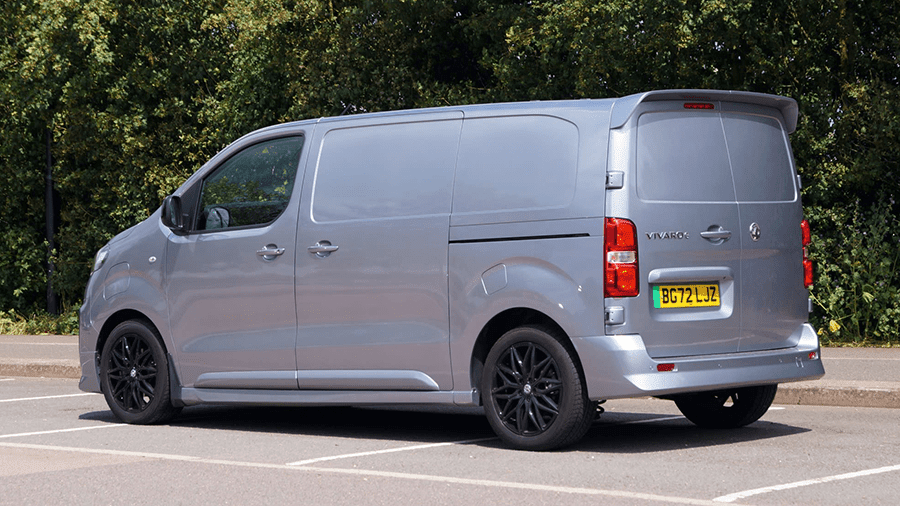
Key Features
No one thing stands out on the Vivaro Electric GS, but rather a combination of benefits across the whole van.
It’s not got class-leading range, speed, practicality or running costs, but it's competitive in every area, and far better than some in many.
That might be damning it with faint praise, but van drivers are generally pretty conservative, favouring sensible and practical options over the latest high-tech gadgets, while fleet managers are more concerned about total cost of ownership than absolute maximum range capabilities.
On those counts, the Vivaro Electric GS and its less exciting trim level siblings will appeal to many.
Performance & Drive
Driving the Vivaro Electric GS doesn’t present any surprises, as we’ve seen the same chassis, battery and motor in countless other vans for many years. That means you get a 136hp electric motor under the bonnet that drives the front wheels, with a 75kWh battery pack hidden under the van's floor delivering the energy to keep it going. Lesser Vivaros get a cheaper but less useful 50kWh battery option, but the GS takes the full charge. Be sure to get the most out of every charge by taking a look at our guide to picking your ideal electric car charger.
Three drive modes allow access to various amounts of power, with Eco mode cutting output by 40% and Normal mode — the mode the van defaults to — giving up 20%, leaving drivers with 109hp. Power mode is what’s needed to access all 136hp and 260Nm of torque.
That said, even in Normal mode, the Vivaro is enthusiastic enough, thanks to the 200+ Nm of torque being available from a standstill. There’s even enough poke to get the front wheels scrabbling for grip, and it'll happily reach and stay at motorway speeds without issue. It’s limited to 81mph, so you won’t get too carried away.
We only carried around 300kg of cargo in the back, so didn’t stretch its abilities much, but the extra weight had little noticeable impact on performance.
Around town, it’s a peach. The ride is comfortable, with light steering, and good visibility out of the front and side, making it a cinch to manoeuvre. The wing mirrors are a little on the small side, though. As speeds increase, it gets a little more breathless as the electrons struggle to keep up, but the ride remains compliant with little to complain about. Even if there was, there’s still less noise and vibration than in its diesel siblings.
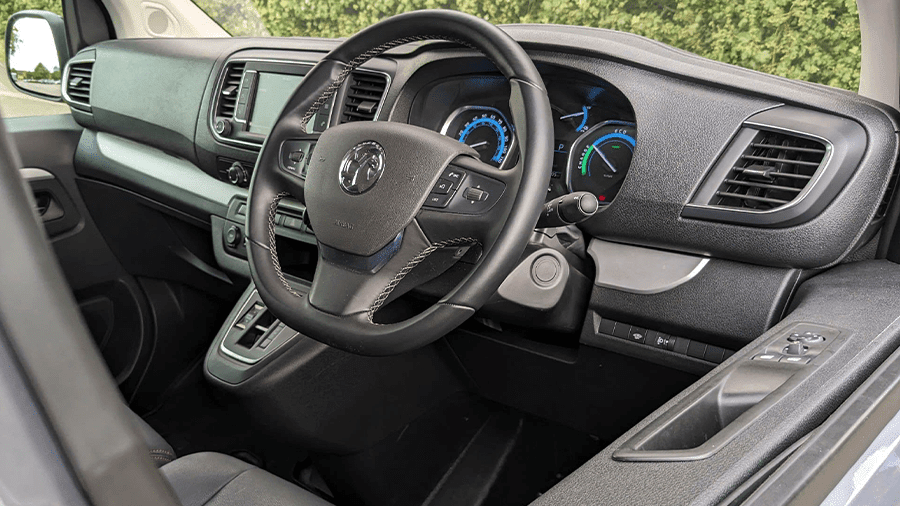
Running Costs
As with any electric vehicle, how much it costs to run depends on how you charge it. The best option is to plug in at home overnight, where a suitable electricity tariff can see a 100% charge costing less than £8. The van will go for 189 miles on a full charge, which works out significantly cheaper than paying for diesel. Of course, top up at motorway services, and you’ll pay a far higher rate, where the difference between electric and diesel becomes negligible, but at least you’ll be able to go from 20% to 80% charge in about half an hour.
The range figure of 189 miles isn’t too optimistic, either, as we returned 2.4 miles per kWh over a week of varied driving, which works out at a range of 180 miles. Close enough, although the non-GS versions of the Vivaro will go slightly further.
The purchase costs are rather high, with the GS attracting a price tag of £57,800 (before VAT and any plug-in van grants), which is reflected in leasing payments, but tax bills and running costs will be lower. Whether it works for you financially will need some spreadsheet work, but the longer you run it, the better the pence per mile gets.
Service intervals, once you're past the first service, are every two years or 25,000 miles, so you won’t get to know your garage's receptionist very well. A three-year or 100,000-mile warranty backs the van, although cover on the battery pack is extended to eight years.
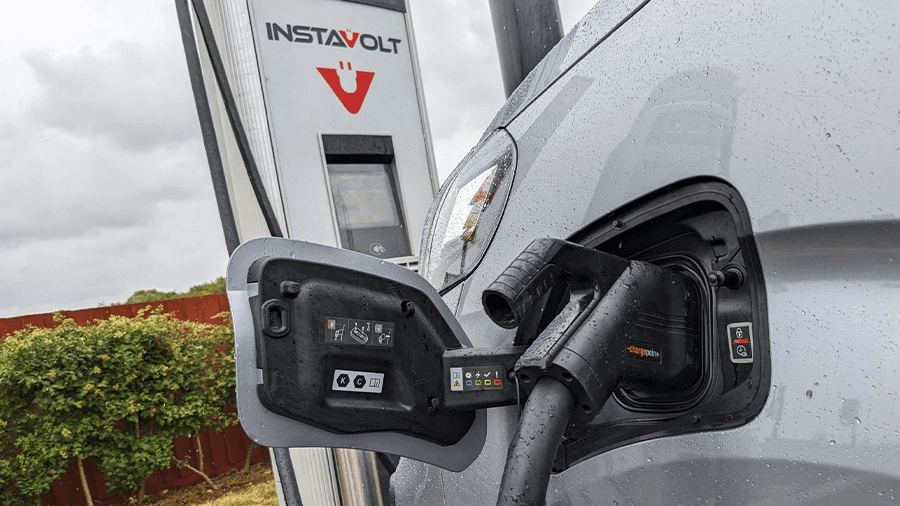
Interior & Tech
If you’ve seen one Vivaro, you’ve seen them all. Well, mostly. The Electric version has some specific benefits, such as the removal of the gearstick, replaced by a rocker switch to select forward or reverse. It’s a shame Vauxhall hasn’t chosen to remove the large lump that it sits on, but that would have required some significant reengineering.
The instrument cluster also differs, with a handy meter showing how much energy you're using, and specifically how much power the climate control system uses.
Beyond that, it’s much the same, but the move to the GS trim lifts things a little. Leather-covered seats and steering wheel, and a smattering of GS logos, look good but the 7.0-inch infotainment screen is relatively small, the undersized tray next to the USB socket isn’t big enough to safely hold a modern smartphone, and the offset driving position won't be to everyone's taste. No amount of red-stitching will change that.
The passenger bench offers enough space, even when the van is three-up, but the middle passenger won’t thank you, especially with their knees pressed against the protruding gearbox panel.
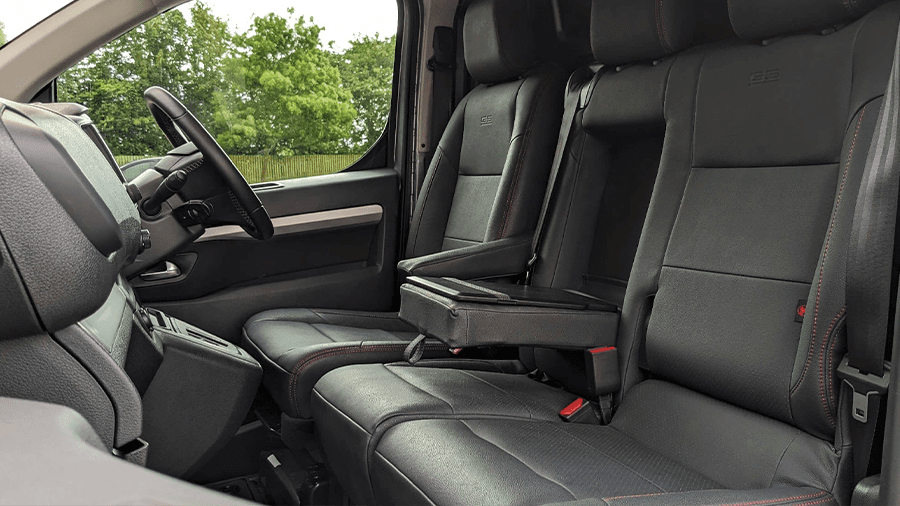
Payload & Practicality
You won’t find many variants of the Vivaro Electric GS to choose from, with Vauxhall opting to limit it to the shorter body length only. With only one roof height across the Vivaro range, that means you get a body that’ll take a load up to 2,512mm long and 1,636mm wide. An internal roof height of 1,397mm creates a total cargo volume of 5.5m3, which is about equal to its rivals.
The low roof height limits some loads but also keeps the van under two metres tall, allowing it to head into most multi-storey car parks and low-roof locations without a problem.
A clever load-through option provides a small opening in the metal bulkhead to slot long, thin objects through. It means the passenger seat can’t be used, but it does extend the load length available to 3,674mm.
Vauxhall fits a sliding door to both sides of the Vivaro, which makes a huge difference to accessibility, especially in urban last-mile areas. Rear barn doors swing open to 180 degrees, allowing a forklift to get close enough to slide a couple of Euro pallets in the back.
Payload limits are impressive for an electric van, with the Vivaro GS taking up to a tonne of cargo in the back. It’ll tow a tonne, too.
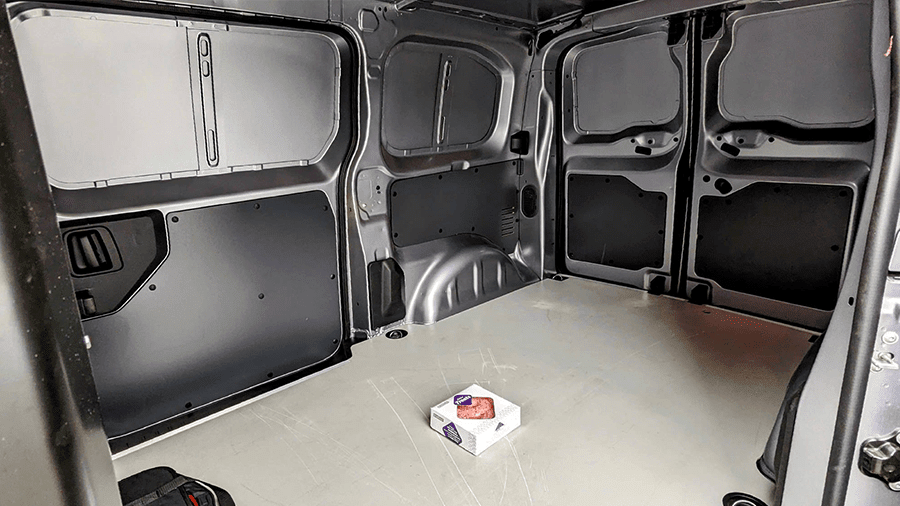
Safety
Vauxhall has loaded the Vivaro Electric GS with all the safety kit it has, much of which comes as a £1,000 option on lower-spec models. The regular van received a Silver award from the safety experts at Euro NCAP, and it’s a fair bet the GS might have gone one better.
Among many other items, you'll find lane departure warning, automatic lights and wipers, blind spot detection, parking sensors front and back, a 360-degree camera system, automatic emergency braking, adaptive cruise control, an intelligent speed limiter and traffic sign recognition.
What you won’t find are any optional extras. Every last bit of safety technology that Vauxhall could fit has been added.
Options
There’s one body size, one motor, and one battery size. If you want a Vivaro Electric GS, the only thing you need to think about is its colour, with anything other than white costing £650.
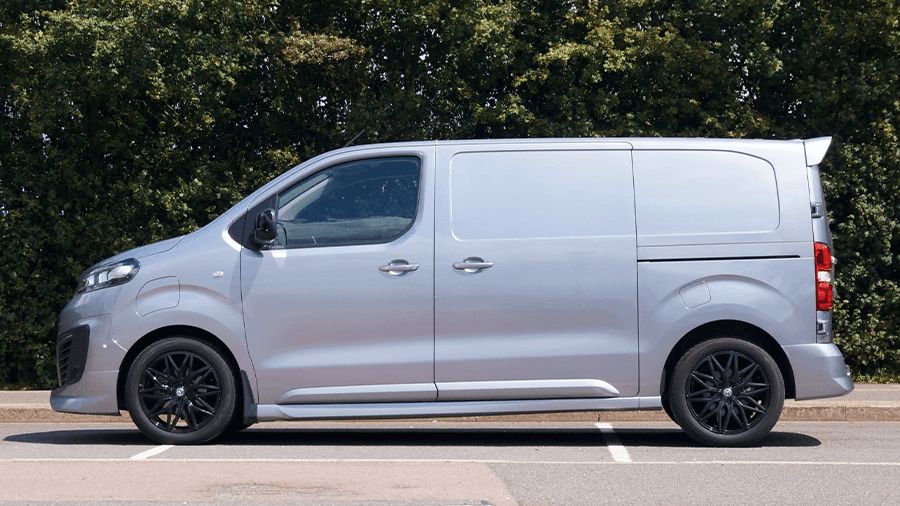
Rival Vans
There are four clear rivals right off the bat. The Citroen e-Expert, Fiat e-Scudo, Peugeot e-Expert and Toyota Proace Electric are more or less identical, so expect exactly the same performance, cargo-carrying ability, positive points and negative points as you’ll find on the Vivaro. You won’t get the GS styling pack, although the Toyota counters that with a tremendous 10-year warranty, albeit with a few conditions attached.
There’s no electric alternative from Ford, although an E-Transit Custom is arriving in 2024. Having seen an early prototype, it looks like it’ll knock the socks off its rivals.
The Volkswagen ID. Buzz Cargo is, arguably, a style-led rival, but it sacrifices so much practicality in the pursuit of fashion that it should really be considered alongside more compact competitors.

Verdict
Sometimes, you look at a new product and don’t expect much, and that’s how I felt about the Vivaro Electric GS. It’s a familiar product with its strengths and weaknesses well known — it’s better than rivals in some areas, worse in others — and sticking a ‘sporty’ GS badge felt a little unnecessary. Mutton, lamb, and so on.
Fortunately, I was wrong in my supposition. While, on paper, the GS doesn’t add anything to the Vivaro beyond expense, rendering it unappealing to any fleet manager, the soupcon of style and more significant on-street presence will make any owner-operator or small business owner beam with pride.
It could just be another work van, but the GS makes it feel so much more. Sticking a spoiler on a popular model is a tried and tested method of reigniting interest, and damn it, it’s worked again!
Where to next?
View latest Vauxhall Vivaro-e leasing deals - from just £348.99 per month exc VAT**.
Call us on 0118 3048 688 or hit the green 'Enquire' button for more details.
Looking for a great leasing deal? Check out our incredible range of car lease deals.
New Medium Van? Read our latest Car Reviews and find the right model for you.
Want to know more about leasing? Take a look at our comprehensive Leasing Guides.
Interested in everything motoring? Why not catch up on all the latest Car Leasing News.
**Score based on Select’s unique meta score analysis, taking into account the UK’s top leading independent car website reviews of the Toyota Hilux Pick Up
**Correct as of 15/09/2023. Based on 12 months initial payment, 5,000 miles over a 60 month lease. Initial payment equivalent to 12 monthly payments or £4,187.88 (Plus admin fee) Ts and Cs apply. Credit is subject to status.
















